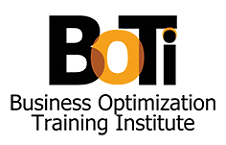
Trusted Training Partners


















Home / Software & IT / Software & IT Courses / Java Short Course in South Africa
Quick Look Course Summary:Java Short Course in South Africa
-

Next Public Course Date:
-

Length: 3 day(s)
-

Price (at your venue): 1 Person R 16,700.00 EX VAT 3 Person R 11,644.28 EX VAT 10 Person R 7,836.00 EX VAT
-

Certification Type:Non-Accredited
-

Locations & Venues: Off-site or in-house. We train in all major city centres throughout South Africa.

Get Free & personalised
Training Advice
Java Overview – Getting with the Program
The programming language commonly known as Java was first developed by Sun Microsystems at the beginning of the 1990s and while it is essentially used for Internet-based applications, Java is nevertheless an efficient and simple general-purpose programming language. Initially designed and developed to cater for embedded network applications that run on multiple platforms, Java is a portable, object oriented and interpreted programming language.
Java began as a project entitled ‘Oak’ by James Gosling in June 1991. Gosling wanted to implement a virtual machine and a language with a familiar C-like notation but that has greater simpilicity and uniformity than C/C++. Java was first implemented publically in 1995 with the promise of “write Once, Run Anywhere” and with free runtimes on popular platforms. Java was fairly secure and its security was configurable which allowed for network and file access to be limited. Major web browsers rapidly incorporated Java into standard configurations in a secure ‘applet’ configuration and new versions of Java, for large and small platforms, were then designed with the introduction of ‘Java 2’.
Java Philosophy
At Java’s inception, its implementation had 5 primary objectives:
1. That it ought to use programming methodologythat is object oriented
2. That it ought to enable the same program to be able to be executed on several operating systems
3. That it ought to come with built-in support for using computer networks
4. That it ought to be designed to execute code securely via remote sources
5. That it ought to be easy to use by integrating what were seen as the good elements of other object-oriented languages.
Let us take an in-depth look at a few of Java’s objectives.
Object orientation
Object orientation (OO) refers to a method of programming and language design. While there are many interpretations of OO, one primary distinguishing idea is to design software so that the various types of data it manipulates are integrated with their relevant operations. Hence, data and code are combined into entities called objects. An object can be viewed as a self-contained bundle of behavior (code) and state (data). The principle is to isolate the things that change from the things that don’t. Frequently, a change to some data structure requires a corresponding change to the code that operates on that data and vice versa. This isolation process into coherent objects offers a more stable foundation for the design of a software system. The idea is to make large software projects easier to manage, thus improving quality and minimizing incidents of project failure.
One of the other objectives of OO programming is to create more generic objects in order that, between projects, software can become more reusable. For example, a generic “customer” object should have more or less the same basic set of behaviors between different software projects, especially when these projects overlap on some fundamental level as they often do in large organizations. In this instance, software objects can hopefully be seen more as pluggable mechanisms, helping the software industry build projects mainly from existing pieces that have been well tested, thus leading to a huge reduction in development times. Software reusability has met with mixed practical results, with two major difficulties, that is: the design of truly generic objects is not readily understood, and the absence of a methodology for broad communication of reuse opportunities. Certain open source communities are actively helping to minimize the reuse problem by providing authors with means to disseminate information about generally reusable objects and object libraries.
Platform independence
Platform independence is another Java feature, which means that programs written in the Java language must be able to run similarly on diverse hardware systems. In other words, the idea is that one should be able to write a program once and run it anywhere.
The majority of Java compilers achieve this by compiling the Java language code “halfway” to bytecode (specifically Java bytecode)— Java-specific simplified machine instructions. The code is then run on a virtual machine (VM), which is a program that is written in native code on the host hardware and that is designed to interpret and execute generic Java bytecode. Including the likes of threading, graphics and networking, standardized libraries are also provided which enable access to host machine features in a unified manner.
Sun Microsystem’s Java license requires compatibility of all implementations. This turned into a legal dispute with Microsoft after Sun claimed that the Microsoft implementation did not support the RMI and JNI interfaces and that they had added in platform-specific features of their own. In response to this legal issue, Microsoft now no longer ships Java to include Windows, and in recent Windows versions Internet Explorer does not support Java applets unless a third-party plug-in is used. Nevertheless, Sun and others have introduced Java run-time systems at no cost for those and other versions of Windows.
To achieve portability, the first implementations of the Java language used an interpreted virtual machine. These implementations produced programs such as ones written in C or C++ and that ran more slowly than programs compiled to native executables. Hence, the language suffered a reputation for poor performance. More recent implementations of the JVM produce programs that run significantly faster than previous programs, using multiple techniques.
The first technique involved here is to simply compile directly into native code while entirely skipping bytecodes, as is the case of a more traditional compiler. This achieves good performance, but at the expense of portability. Another technique, known as just-in-time compilation (JIT), translates the Java bytecodes into native code at the time that the program is run which results in a program that also incurs compilation overhead during execution but that executes faster than interpreted code. VMs that are more advanced use dynamic recompilation, in which the virtual machine can analyze running program behaviour and selectively recompile and optimize vital parts of the program. Since the dynamic compiler bases optimizations on knowledge about the set of loaded classes as well as the runtime environment, dynamic recompilation can achieve optimizations superior to static compilation. Dynamic recompilation and JIT recompilation allow Java programs to maintain portability by leveraging native code speed.
It is technically difficult to achieve portability and Java’s success in getting it right has been varied. Although it is indeed possible to write programs that behave consistently across many host platforms for the Java platform, the large number of available platforms with small errors or inconsistencies led to Sun’s “Write once, run anywhere” catch phrase being parodied as “Write once, debug everywhere”.
Java Popularity
Since it first emerge, Java has enjoyed tremendous popularity and its rapid climb and wide acceptance can be attributed to its design and programming features, with particular focus on its promise that one can write a program once and run it anywhere thereafter. Java was selected as the preferred programming language for network computers (NC) and has been touted as a universal front end for the enterprise database.
A preferred programming language
Due to Java’s inherent robustness, security features, cross-platform capabilities and ease of use, it has become a preferred programming language for providing Internet solutions worldwide. Mobile applications such as Android are built in Java and Java is widely used in web applications since it provides a variety of frameworks which are better when compared to conventional programming languages. Java is also widely used in embedded space and multiple Java web servers such as Tomcat, Apache and Simple dominate the web server space.
When we talk about Java as being ‘portable’ what this essentially means is that regardless of what operating system or hardware features are used, the same Java application will run on any computer as long as it has a Java interpreter. Along with its portability, one of Java’s other significant advantages is its security features. Java’s security features are designed to protect a computer that is running a Java program from problems that arise from malicious programs such as viruses or erroneous code. A Java applet downloaded from the Internet can safely run since Java’s security features prevent these applets from being able to access a computer’s network connections or hard drive. An applet is defined as a small Java program embedded within an HTML page.
Since its source code is first compiled into a binary byte-code, Java can be seen as both a compiled and an interpreted programming language. Hence, this byte-code typically runs on the Java Virtual Machine (JVM), which is generally a software-based interpreter. Using compiled byte-code enables the interpreter or virtual machine to be small as well as efficient and almost as fast as the CPU running native, compiled code. This byte-code gives Java its portability which means that it will run on any correctly implemented Java Virtual Machine irrespective of the computer’s hardware or software configuration. Nearly all web browsers, like Netscape Communicator or Microsoft Internet Explorer contain a JVM that runs Java applets.
Because of the JVM, Java code runs somewhat slower than other object-oriented languages such as C++ but is distinctly more portable with more effective security features. The virtual machine therefore ensures isolation between the computer that is running the software and any untrusted Java program. While C++ and Java syntax are similar in nature, the languages they use are distinctly different. Hence, while C++ allows programmers to implement operator loading, Java does not. Java is also a dynamic language which means that you can safely modify a program while it is running, whereas C++ does not make any allowance for this. This is a critical factor for network applications that cannot afford unnecessary downtime. All basic Java data types are predefined as opposed to platform-dependent while certain data types may change with the platform used in C or C++.
As compared to C++ equivalents, Java programs are more highly structured since, in Java, all functions and executable statements must reside within a class whereas C++ enables lines of code and function definitions to exist outside of a class. In Java, global data and methods cannot reside outside of a class as is the case with C++. While they may be cumbersome at times, these restrictions help to maintain the security and integrity of Java programs, thus compelling them to become completely object-oriented. Java is also an open standard language with source code that is publicly available. Sun Microsystems manages and controls the Java language along with its associated products and Sun’s liberal license policy contributed to the Internet community with Java becoming an adopted standard. Hence, tools needed to develop and run Java applets and applications can be downloaded for free at http://java.sun.com.
Choosing Java as a programming language
According to the Stack Overflow’s Developer survey conducted in 2019, over 53% of today’s developers cite Java as their most preferred programming language. Java is more than just a technology and comes with a complete set of complex tools that encompasses just about everything one needs for Java development, namely:
- Java Development Kit (JDK)
The Java Development Kit (JDK) is the very first element a developer needs to download in order to commence with any development using Java. The Java Development Kit is a software package that comprises the following components:
- The compiler
- Documentation
- Utilities
- Java Runtime Environment (JRE)
- Java Runtime Environment
The Java Runtime Environment or JRE is a software layer that runs on top of a computer’s operating system and essentially includes Java Virtual Machine (JVM) as well as the standard Java Class library. The Java Runtime Environment merges the code with the required libraries, thereafter launching the Java Virtual Machine (JVM) which converts bytecode into machine code and executes the code. The Java Runtime Environment also ensures that the dependencies to the Java programs being developed are available.
- Integrated Development Environment (IDE)
The Integrated Development Environment (IDE) is the application that enables the user to run, edit as well as compile the code. Certain IDEs contain features that ease the coding process such as code completion and syntax highlighting. The most popular IDEs used by developers are IDEA, Eclipse, NetBeans and IntelliJ.
Java is widely used
Java has become extremely popular over the years and is the primary technology used for Android development. Hence, if you own an Android smartphone, then you can be guaranteed that it is Java that is running it. Java is also the meat to the bones of the likes of web applications, state websites, scientific computing and Big Data. In the early 2000s, prior to the invention of smartphones, mobile games were also written in Java.
The Benefits of Java
As far as Android development is concerned, until 2016, Java was crucial to Android since it was the only official programming language used in its development. Nowadays, Java is in competition for the Android space with another language known as Kotlin. However, despite having to compete with other technologies, Java still has a number of distinct advantages which often sways one towards making it their programming language of choice as illustrated by the following features:
- Java is a high-level programming language
Java is a high-level programming language which means that it is more like human language than machine language. As a result, it is easier to write, read as well as maintain.
- Java is a stable programming language
Java is known to be a stable programming language since the solutions it creates use features that become increasingly advanced while new ones are also released daily.
- Java is object-oriented
Java enables a developer to write typical programs with reusable code since it belongs to the object-oriented class of programming. Hence, classes can be stated, objects can be generated inside classes and it can work and maintain interaction between two objects.
- Java maintenance is relatively inexpensive
Since the nature of work of a Java program does not rely on any specific form of hardware infrastructure, it is possible to run the server in any machine which makes Java relatively cheap to maintain.
- Java has security at the core of its design
Java is the first technology of its kind to embed security as a core element of its design and possesses and inherent in the Java Virtual Machine (JVM) is a special identifier that detects the bytecode and checks it prior to running.
- Java is multithreaded
Java is multithreaded which means that internally, it can run several tasks simultaneously.
- Java enables distributed computing
Java enables distributed computing which happens when several computers all work together in a network. This in turn enables one to develop applications on networks that contribute towards both the functionality and the application of the data.
- Java is portable
Java’s portability means that a developer needs only write one code once and the program can be started on any platform of choice provided that the chosen platform supports JVM.
- Java is a robust language
Java is known to be one of the most reliable and powerful programming languages since its compilers can identify each and every type of error present in any code. Java is also equipped with features such as garbage collection and exception handling which also contribute towards its proven reliability.

Java has certain disadvantages
As is the case with any form of technology there are not only advantages but disadvantages too and Java is no exception to the rule.
- Java’s slow performance
When Java programs are compared to those written in natively compiled languages like C or C++, they are noticeably slower.
- Java’s memory performance
Since the memory in Java is managed through garbage collection, it deteriorates the manner in which the application performs since when the garbage collector is working this takes place when all other threads are not actively working.
- Java commercial license costs
When used for commercial business and production purposes, since 2019, Oracle requires users to pay for Java Edition 8. Hence, when updates are required and bugs need to be fixed costs are determined by the number of active users as well as the processor which can quickly mount up.
- Java’s verbosity and complicated code
Since the Java language is very similar to natural human language, one needs to use many different words which can make coding quite complicated since developers most often write down all thoughts and commands which makes coding rather cumbersome. This is especially evident when compared to other programming languages such as Python.
When should Java be used?
All things considered there are many applications for which Java is the perfect tool.
- Mobile development with Android
While Kotlin is undoubtedly gaining traction in mobile development, there is more than enough scope for Java programmers since, technically speaking, Java is the primary technology used for Android development.
- Java’s use in Big Data programs
Since Java enjoys widespread fame for being versatile and being able to unify numerous data science techniques, frameworks for processing and storing big data applications; well known and commonly used frameworks such as Hadoop HDFS are entirely created in Java.
- Java’s use in software development
Software applications like Eclipse, Atlassian and even Gmail are all the result of Java technology.
- Java’s use in trading applications
Many third-party trading applications often prefer Java. This is especially the case in the financial services industry.
- Java enables fast, simple, robust development
Java works extremely well for data simulations and modelling and enables fast and simple robust site development.
- Java is ideal for PoS (point of sale) systems
Many business opt for Java in developing PoS (point of sale) systems since they typically rely on platform-independency and a large talent pool.
While Google maintains a high level of secrecy when it comes to its operations, it is known that Google built the components of what is known as the server side of the main functions of Google Docs using Java.
What is Java famous for?
Google Docs
While Google maintains a high level of secrecy when it comes to its operations, it is known that Google built the components of what is known as the server side of the main functions of Google Docs using Java.
Top Applications using Java
- Desktop GUI Applications
- Mobile Applications
- Scientific Applications
- Enterprise Applications
- Big Data Technologies
- Business Applications
- Distributed Applications
- Cloud-based Applications
Java for Beginners Course
Course Introduction
You will gain extensive practical, hands-on experience in first writing then compiling and finally executing Java programs. Using Java’s object-oriented features, you will rapidly learn how to build robust applications. Java is known for a number of things such as being easily maintanable, it is easy to develop and it has a good reputation for being reliable. Java’s simplicity and specific architecture means that programmers are able to develop a single application that effortlessly runs across several platforms. Book your seat on this highly dynamic course and learn to leverage the key features of what Java has to offer.
You Will Learn How To:
- Design and create robust applications that are object-oriented
- Use JDBC to access any relational database
- Use Java collections to organize complex data
- Handle exceptions and read and write files
Java for Beginners Course Outline
The Java for Beginners course covers the following topics:
- Operators as well as Data Types
- The basics of Java
- Objects, Methods and Classes
- Addtional Operators and Data Types
- Program Control Operators
- An in-depth analysis of Classes and Methods
- Interfaces and Packages
- Inheritance
- How to use I/O
- What is multithreaded programming?
- What is meant by Exception handling
- Autoboxing, Enumerations, Annotations as well as Static Import
- Generics
- An introduction to JavaFX
- An introduction to Swing

**Quote does not include Any Exam Fees (if applicable)
IMPORTANT ACTION: Do Not Wait To Improve Your Skills.
Book Now By Completing Online Booking Form / Customised Proposal or Obtain Approval For Your Already Received Customised Proposal
**Quote does not include Any Exam Fees (if applicable)
IMPORTANT ACTION: Do Not Wait To Improve Your Skills.
Book Now By Completing Online Booking Form / Customised Proposal or Obtain Approval For Your Already Received Customised Proposal
Realize incredible savings by sending more delegates
Duration: 3 day(s)
Delegates: 1
Cost (incl):




